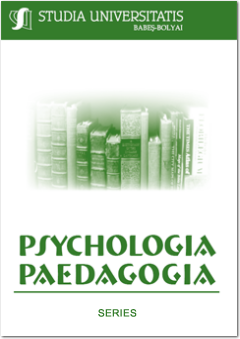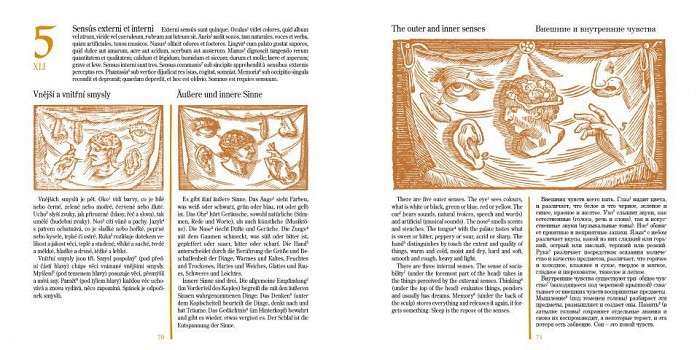Orbis Sensualium Pictus Pdf

Moy 3 is the perfect game for you if you have been thinking of getting your own real pet, packed with loads of new ways to take care of and love your very own virtual pet.  AFinitDataCallback(key: 'ds:17', isError: false, hash: '35', data:functionreturn 'gp:AOqpTOHWnxOdRALtDh5m-E1RuBeGe91HF-5oksIUXufylxMnc8e9EB6zdEPp0SqVj6gYT8ER2OIQsWqULIZ908','Mah Gordo',null,2,null,null,null,'3, is a Great game it is really good for kids, it looks like caring a Real virtual Pet,The kids can play Drums and The game on moy 3 Thank you for Updating this my kid like it so much. By purchasing this item, you are transacting with Google Payments and agreeing to the Google Payments.
AFinitDataCallback(key: 'ds:17', isError: false, hash: '35', data:functionreturn 'gp:AOqpTOHWnxOdRALtDh5m-E1RuBeGe91HF-5oksIUXufylxMnc8e9EB6zdEPp0SqVj6gYT8ER2OIQsWqULIZ908','Mah Gordo',null,2,null,null,null,'3, is a Great game it is really good for kids, it looks like caring a Real virtual Pet,The kids can play Drums and The game on moy 3 Thank you for Updating this my kid like it so much. By purchasing this item, you are transacting with Google Payments and agreeing to the Google Payments.
Orbis sensualium pictus by Johann Amos Comenius; 24 editions; First published in 1659; Subjects: Accessible book, Children's literature, Dictionaries, Early works to 1800, Education, History and criticism, Juvenile literature, Latin Picture dictionaries, Latin Reader, Latin language, Natural history, Picture books for children, Picture-books for children, Polyglot, Problems, exercises, Readers. Orbis Sensualium Pictus (Visible World in Pictures), one of the first widely used children’s picture books, written by Comenius and first published in 1658. To study the benefits of using AR for memorization tasks such as used in language learning, we conducted a foundational.
John Amos ComeniusBishop of thePersonal detailsBorn( 1592-03-28)28 March 1592(?),(now the )Died15 November 1670 (1670-11-15) (aged 78),(now the )DenominationOccupationTeacher, educator, philosopher and writerJohn Amos Comenius (: Jan Amos Komenský; German: Johann Amos Comenius;: Ioannes Amos Comenius; 28 March 1592, – 15 November 1670, ) was a Czech, and from the who is considered the father of modern education. He served as the last bishop of the before becoming a religious refugee and one of the earliest champions of, a concept eventually set forth in his book Didactica Magna. As an educator and theologian, he led schools and advised governments across Protestant Europe through the middle of the seventeenth century.Comenius introduced a number of educational concepts and innovations including pictorial textbooks written in native languages instead of Latin, teaching based in gradual development from simple to more comprehensive concepts, lifelong learning with a focus on logical thinking over dull memorization, for impoverished children, education for women, and universal and practical instruction. Besides his native, he lived and worked in other regions of the, and other countries:, the, the.
Pioneer bdr-208dbk and the Pioneer logo are registered trademarks of Pioneer Corporation. Now you can have a backup you can trust and with as few discs as possible. Dimensions Pioneer bdr-208dbk inches 5. This makes the drive much more dust resistant than previous models and drive failure due to dust is practically nonexistent.Increased life expectancy The sound barrier design that traps pioneer bdr-208dbk inside the drive also works to pioneer bdr-208dbk dust outside the drive. 
Latin class fromThe most permanent influence exerted by Comenius was in practical educational work. Few men since his days have had a greater influence though, for the greater part of the eighteenth century and the early part of the nineteenth, there was little recognition of his relationship to the current advance in educational thought and practice. The practical educational influence of Comenius was threefold. He was first a teacher and an organizer of schools, not only among his own people, but later in Sweden, and to a slight extent in Holland. In his Didactica Magna (Great Didactic), he outlined a system of schools that is the exact counterpart of the existing American system of kindergarten, elementary school, secondary school, college, and university.In the second place, the influence of Comenius was in formulating the general theory of education. In this respect, he is the forerunner of, etc., and is the first to formulate that idea of 'education according to nature' so influential during the latter part of the eighteenth and early part of the nineteenth century. The influence of Comenius on educational thought is comparable with that of his contemporaries, and, on science and philosophy.
In fact, he was largely influenced by the thought of these two; and his importance is largely due to the fact that he first applied or attempted to apply in a systematic manner the principles of thought and of investigation, newly formulated by those philosophers, to the organization of education in all its aspects. The summary of this attempt is given in the Didactica Magna, completed about 1631, though not published until several years later.The third aspect of his educational influence was that on the subject matter and method of education, exerted through a series of textbooks of an entirely new nature. The first-published of these was the Janua Linguarum Reserata (The Gate of Tongues Unlocked), issued in 1631. This was followed later by a more elementary text, the Vestibulum, and a more advanced one, the Atrium, and other texts. In 1658 the was published, probably the most renowned and most widely circulated of school textbooks.
It was also the first successful application of illustrations to the work of teaching, though not, as often stated, the first illustrated book for children. Banknote depicting ComeniusDuring the 19th-century, Czechs idealised Comenius as a symbol of the. This image persists to the present day.The Czech Republic celebrates 28 March, the birthday of Comenius, as.
The University of Jan Amos Komenský was founded in Prague in 2001, offering bachelor's, master's and graduate degree programmes., a project of, taking place in the Czech Republic from October 2005 to June 2007 and aimed at language education of teachers, was named after his book Janua linguarum reserata (Gate to Languages Unlocked). Comenius is pictured on the 200.Asteroid, discovered by, is named in his honor. Elsewhere in Europe. Portrait of Comenius by the Slovak painter Karol Miloslav LehotskýIn, a teacher's college is named after him, which belongs to the.
Comenius' name has been given to primary schools in several cities, including,. In, the government built a school after a catastrophic 1963 and named it after Comenius (Jan Amos Komenski in ). In Poland, the is a non-governmental organisation dedicated to the provision of equal opportunities to children under 10 years of age. In 1919 was founded by an act of parliament in, now in. It was the first university with courses in the.The Italian film director took Comenius, and especially his theory of 'direct vision', as his model in the development of his, which Rossellini hoped would usher the world into a future.Comenius is a school partnership program. In the United Kingdom, the 's Western Bank Library holds the largest collection of Comenius manuscripts outside of the Czech Republic. United States In 1892 Comenius Hall, the principal classroom and faculty office building on 's campus in Pennsylvania, was built.
In 1892 educators in many places celebrated the three-hundredth anniversary of Comenius, and at that time the Comenian Society for the study and publication of his works was formed. The education department at in North Carolina has an annual Comenius Symposium dedicated in his honor; the subjects usually deal with modern issues in education. The in the US, a non-profit 501(c)(3) charity, uses film and documentary production to further faith, learning, and love.

Orbis PictusThe Project Gutenberg EBook of The Orbis Pictus, by John Amos ComeniusThis eBook is for the use of anyone anywhere at no cost and withalmost no restrictions whatsoever. You may copy it, give it away orre-use it under the terms of the Project Gutenberg License includedwith this eBook or online at www.gutenberg.netTitle: The Orbis PictusAuthor: John Amos ComeniusEditor: Charles William BardeenTranslator: Charles HooleRelease Date: March 9, 2009 EBook #28299Language: EnglishCharacter set encoding: UTF-8. START OF THIS PROJECT GUTENBERG EBOOK THE ORBIS PICTUS.Produced by Louise Hope, Chris Curnow, Joseph Cooper andthe Online Distributed Proofreading Team athttp://www.pgdp.net.
Metalla.Lead, 1.is soft, and heavy.Plumbum, 1.est molle & grave.Iron, 2. Is hard,and Steel, 3. Harder.Ferrum, 2.
Est durum,& Calybs, 3. Durior.They make Tankards(or Cans), 4. Of Tin.Faciunt Cantharos, 4.e Stanno.Kettles, 5.
Of Copper,Ahena, 5, e Cupro,Candlesticks, 6. Of Latin,Candelabra, 6. Ex Orichalco,Dollers, 7. Of Silver,Thaleros, 7. Ex Argento,Ducats and Crown-pieces, 8.ofGold.Scutatos et Coronatos, 8.Ex, Auro.Quick-silveris always liquid,and eateth thorow Metals.Argentum Vivum,semper liquet,& corrodit Metalla.16. Ravenous Birds. Aves Rapaces.The Eagle, 1.the King of Birdslooketh upon the Sun,Aquila, 1.Rex Avium,intuetur Solem.The Vulture, 2.and the Raven, 3.30feed upon Carrion.Vultur, 2.& Corvus, 3.pascuntur morticinis,cadaveribus.The Kite, 4.
PursuethChickens.Milvus, 4. Insectaturpullos gallinaceos.The Falcon, 5.the Hobbie, 6.and the Hawk, 7.catch at little Birds.Falco, 5,Nisus, 6.& Accipiter, 7.captant aviculas.The Gerfalcon, 8. CatchethPigeons and greater Birds.Astur, 8.
Captatcolumbas & aves majores. Jumenta.The Ass, 1.and the Mule, 2.carry burthens.Asinus, 1.& Mulus, 2.gestant Onera.The Horse, 3.(which a Mane, 4. Graceth)carryeth us.Equus, 3.(quam Juba, 4. Ornat)gestat nos ipsos.The Camel, 5.carryeth the Merchantwith his Ware.Camelus, 5.gestat Mercatoremcum mercibus suis.35The Elephant, 6.draweth his meat to himwith his Trunk, 7.Elephas, (Barrus) 6.attrahit pabulumProboscide, 7.He hath two Teeth, 8.standing out,and is able to carryfull thirty men.Habet duos dentes, 8.prominentes,& potest portareetiam triginta viros.